Retro Replay Review
Gameplay
The core of Rambo: First Blood Part II hinges on its text adventure framework, challenging players to rely on descriptive passages and decision-making rather than run-and-gun mechanics. Every encounter with enemy patrols, river crossings, and hidden booby traps is presented through vivid narrative cues. Players must parse each scenario carefully, choosing actions like “sneak,” “ambush,” or “use C4” at the right moment to progress.
What sets this adaptation apart is its branching dialogue and action trees. A single misstep—such as firing too early or failing to neutralize a guard silently—can alert an entire camp to your presence, forcing a grueling restart. This tension mirrors the high stakes of Stallone’s mission, reinforcing the feel of a one-man rescue operation deep behind enemy lines.
Puzzle elements weave seamlessly into the action. Locating the guard schedules, decoding makeshift maps, or timing river rapids correctly can mean the difference between freedom for the POWs and a fatal mission failure. These interactive challenges reward exploration and careful note-taking, offering a surprising level of depth for a game driven primarily by text.
Replayability is built into the mission’s multiple routes. Will you attempt a full stealth extraction, disabling radios to prevent reinforcements? Or do you go in guns blazing, risking casualties but shortening the mission timer? The choices you make shape not only the ending sequence but also the personal sense of achievement when the smoke clears.
Graphics
As a text adventure, Rambo: First Blood Part II eschews traditional graphics in favor of descriptive storytelling. There are no polygonal models or sprite animations; instead, evocative prose paints each landscape—from the tangled jungles of Vietnam to the grim compound walls surrounding the POW camp.
That said, the title includes occasional static illustrations that serve as atmospheric touchpoints. Detailed ink sketches depict Rambo crouched behind foliage, prisoners huddled in darkness, and muzzle flashes illuminating the night sky. These images punctuate the text and help ground the player’s imagination.
For purists expecting elaborate visuals, the minimalist approach may feel underwhelming. However, the strength of the game’s writing often compensates for any graphical scarcity, inviting players to fill in the blanks with their own mental imagery. This style is reminiscent of classic interactive fiction, where the mind’s eye becomes the primary display.
Customizable text styles and adjustable window sizes allow you to tailor the presentation to your preference. Bold prompts emphasize urgent decisions, while ambient descriptions fade into the background, creating a layered reading experience that mimics cinematic pacing.
Story
Drawing directly from the film’s plot, the narrative thrust is immediate: Rambo returns to the Vietnamese jungles to locate and free American POWs. The game captures the movie’s grit and emotional weight, weaving in flashbacks and internal monologues that deepen our understanding of the hero’s resolve.
Dialogue choices with captured soldiers and hostile patrol leaders introduce moral complexity. Should you reassure the prisoners to maintain morale, or remain stoic to keep your own edge? These conversational branches can alter NPC behavior, with some prisoners refusing to move without encouragement, while others panic under pressure.
Plot beats, such as infiltrating the camp’s command center or planting explosives under the watchful eyes of guards, are executed through richly detailed text. The absence of spoken voiceovers places the burden on your reading pace, but this also grants you full control over suspense and timing.
Subplots add texture to the overarching mission. From covert intel exchanges with sympathetic villagers to the emotional toll of leaving some behind, the game’s writers have fleshed out a world beyond the film’s runtime. These moments provide respite between action sequences and elevate the narrative beyond a straightforward rescue operation.
Overall Experience
Rambo: First Blood Part II stands as a bold experiment in adapting a high-octane action movie into interactive fiction. While it lacks the flashy visuals of contemporary shooters, the game compensates with tense decision trees and atmospheric writing. Die-hard fans of Stallone’s character will appreciate the authentic voice and attention to thematic detail.
The learning curve may be steep for those unaccustomed to text adventures, but patience is rewarded with an immersive, choice-driven journey. Occasional hints and an in-game journal help mitigate frustration, guiding newcomers through the more cryptic puzzle segments without hand-holding.
Multiplayer or competitive elements are absent, but the sheer number of branching paths and hidden storylines invites multiple playthroughs. Discovering all possible rescue strategies and uncovering each character’s backstory can take dozens of hours, offering solid longevity for narrative enthusiasts.
Ultimately, Rambo: First Blood Part II is best suited for players who value story, atmosphere, and strategic thinking over real-time combat. If you’re looking for a cerebral rescue mission filled with moral quandaries, boundary-pushing choices, and the spirit of ’80s action cinema, this text-based adaptation delivers.
 Retro Replay Retro Replay gaming reviews, news, emulation, geek stuff and more!
Retro Replay Retro Replay gaming reviews, news, emulation, geek stuff and more!
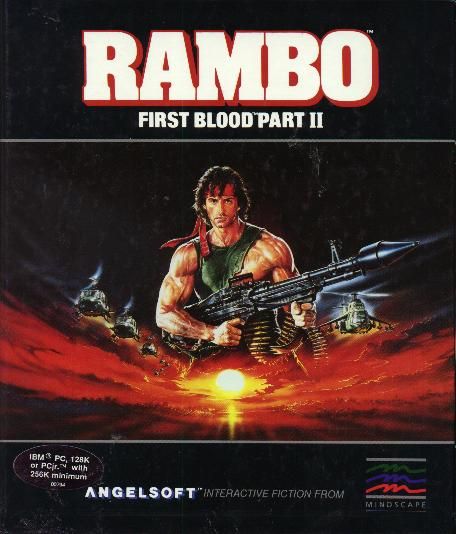
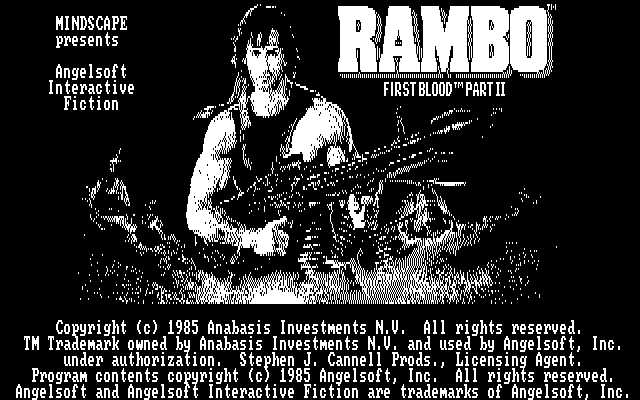
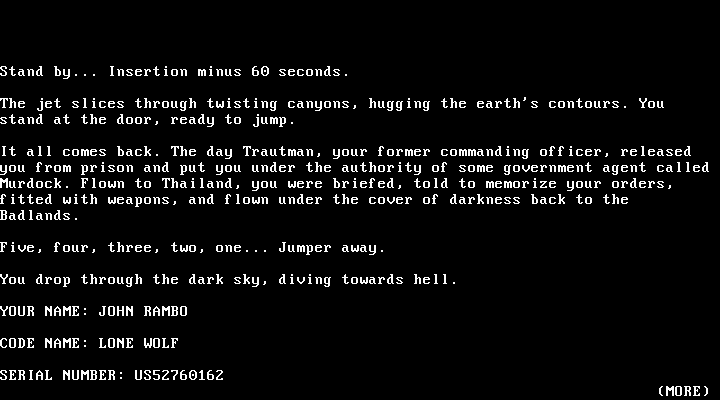

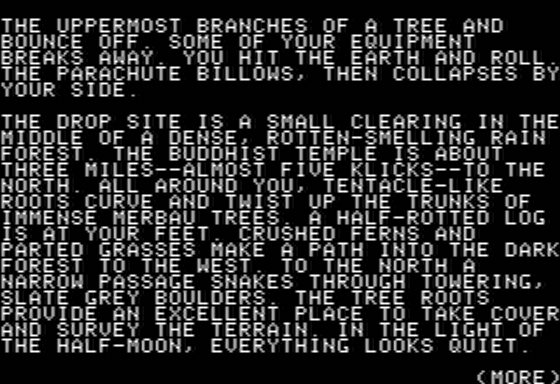
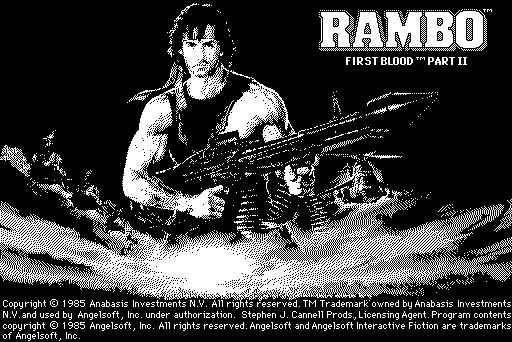



Reviews
There are no reviews yet.